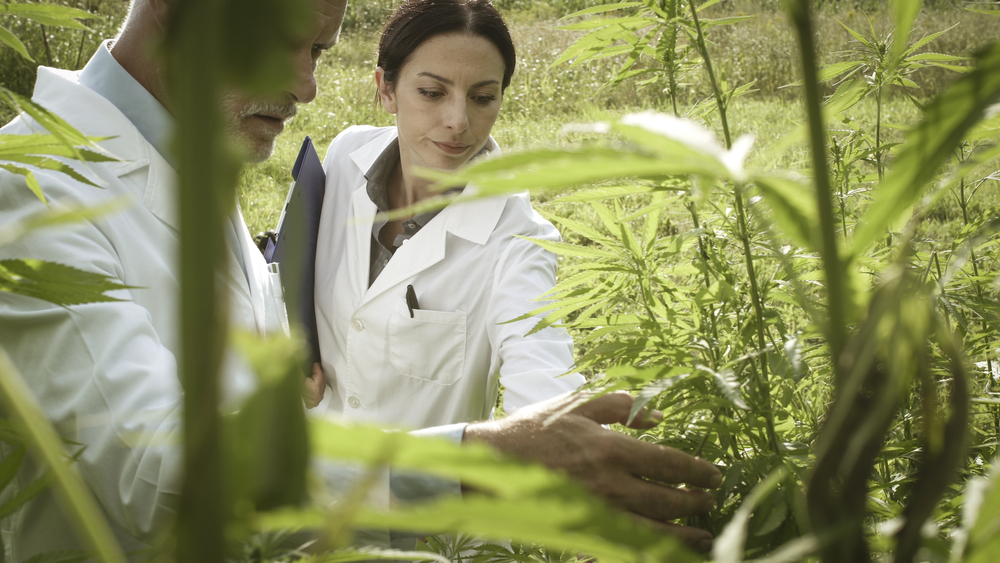
While social equity remains a concern for states with legalized cannabis programs (adult-use and medicinal), the focus has been on inclusion. Ensuring that persons of color (POC) entrepreneurs have an equal opportunity to participate in the rapidly growing cannabis industry. And that includes for women in cannabis
For some states, that has meant drafting new legislation to keep a percentage of business licenses reserved only for black or brown-skinned entrepreneurs and professionals. But social equity conversations seem to leave out one aspect; the opportunities for women in the ‘high’ growth sector.
Women in the American cannabis sector are trailblazing a path at every industry level, from entrepreneurs starting cultivation, processing, or dispensary businesses to regulatory executives in health safety and policy. Women are also starting ancillary businesses in the cannabis industry by specializing in logistics (trucking), packaging, advertising, and marketing.
If you were to guess how many Americans currently use cannabis, you might be surprised to learn that only about 12% of U.S. residents do. And overwhelmingly, the majority of cannabis users right now are men, not women.
A 2020 Gallup Poll indicated that the number of Americans using cannabis has remained virtually unchanged since 2015. The data was used as part of research into the Marijuana Opportunity Reinvestment and Expungement Act (MORE). The legislation was reintroduced in 2021 to the House of Representatives and federally decriminalized cannabis possession and use. Among other necessary measures including mass expungement.
The Gallup survey reported that:
Politics have a lot to do with cannabis use. About 24% of people who purchase legalized cannabis are Liberals. Only 4% of Conservatives use weed. And about 12% of cannabis users in the U.S. are Moderates.
Why do fewer women than men use cannabis? Some clinical studies suggest that cannabis use has a high social influence motivator for men. When men smoke cannabis, it is a social connection, or lifestyle and culture. Studies suggest that men also prefer higher potency cannabis products than women do. In some medical studies, women were shown to have a stronger psychoactive reaction to cannabis than men. Less is more for women. Although researchers still aren’t sure why.
Women tend to view cannabis less for social interaction and more specifically to help moderate symptoms like pain or mental health conditions like anxiety or depression. They are also less likely to use cannabis for fear of legal repercussions. For example, women in some surveys fear the loss of custody of children, impact on child caring, and other concerns that make them hesitate to try or regularly use cannabis.
Some clinical studies suggest that women are also more prone to chemical dependency. That may create some hesitation to use cannabis products. Women tend to smoke cannabis at lower potency levels and in smaller quantities than men.
What could change if the federal decriminalization of cannabis through the MORE Act happens? There may be less fear of legal retribution for women who want to try medical cannabis as a treatment option. And that means the gender balance of cannabis use could be disrupted. More women could become open to the idea of using cannabis for adult-use or medicinal purposes.

More men use cannabis than women in America. And the industry is still very male-dominated, at all levels from production and processing, to sales and marketing. However, some female entrepreneurs and professionals have broken the glass ceiling in America’s budding cannabis market.
There are many opportunities to advance women’s health by educating them about the potential wellness benefits of medical cannabis for various conditions that have been traditionally addressed with prescription NSAIDs or opioids.
In 2019, there was an almost equal demographic distribution of males and females in the United States. There were 161.6 million American men and 166.7 million women living in the country. That means women should have an equal voice and representation in the cannabis sector. And arguably, given that American women remain hesitant to use cannabis, that voice may be even more important.
By 2025, the number of women (172.28 million) versus the number of men (164.87) may increase marketing’s importance since females are predicted to be the highest consumer growth potential.
Marketing to women, by women, could be the next horizon of sales growth. And multi-state operators are the first to acknowledge that there needs to be an equalized emphasis on cannabis benefits to both sexes. Still, women face many challenges starting cannabis businesses, and climbing the corporate ladder, as they do in other male-dominated industries.
Some of the major executive and entrepreneurial leaders in American cannabis are women. And they are blazing a path for more women to seek career opportunities in one of the fastest-growing industries in the country.
Some of the career paths that women in cannabis are forging include:
When you see the women that are building a lucrative career during the cannabis and alternative medicine boom in the United States, there is a lot to admire. From their innovation to the way they are elbowing in on corporate leadership in higher numbers every year. It is inspirational to other women forging the same path in the cannabis sector.
Here are five exceptional female entrepreneurs, business leaders, and experts blazing a path for women in the U.S. cannabis industry.
Until Emily Paxhia had both parents diagnosed with cancer, she had a negative “just say no” view about cannabis. Learning in a personalized way about the medicinal value of medical marijuana, she and her brother started Poseidon Asset Management. According to Forbes, it is a large cannabis investment firm in San Francisco, with over $105 million in assets.
A scientist with a master’s in supply chain management and the Chair of Women Grow, Dr. Macias is one of the most influential female professionals in cannabis. National Holistic Health Center is managed by Macias, who is an outspoken patient advocate. Women Grow a national cannabis education network that has a reach of more than 50,000 patients and practitioners. Dr. Macias was also the Treasurer and Secretary of the DC Medical Cannabis Trade Association.
Olivia Alexander got her start in the cannabis industry as a budtender at eighteen (18) years. She innovated a collection of CBD wellness products for women. At a time when both cannabis and CBD brands were highly male-focused in messaging and packaging. She is the formulator of Kush Queen and KINGDM products, including everything from bath bombs to skin serums and more.
The Connecticut native has already had a career in cannabis worth envying. Were it not for her hard work and resilience and her self-made determination to succeed. Cynthia Salarizadeh has a mission to create products that provide different methods of intake, a departure from smokable, vape oils, and tinctures, like cannabis-infused beverages.
Read more about her career, public relations, and brand marketing superstardom on Forbes.
If you ask Codie Sanchez how she defines her career, she describes herself as a “reformed journalist.” Those skills of sniffing a good scoop and understanding cultural, political, and social disruption have served her well. As the Managing Director and Partner at Entourage Effect Capital, she helps more than 40 companies from two managed hedge funds ($100M+). Codie Sanchez is also on the Board for the Marijuana Policy Project.

The knowledge you get in a greenhouse or as a budtender in a medical dispensary is valuable. This is why some women looking to segue into the cannabis sector may pursue a part-time job at the ground level. To gain that practical experience. And learn not only about strains but the medicinal potential of cannabis. And why patients use it.
In terms of formal education for a career in cannabis, there are few opportunities. But academic institutions are often threatened by the federal prohibition of marijuana. Colleges and Universities that get funding from state and federal governments have hesitated to cross that line. It could impact the financial support they get from the feds.
There are, however, some institutions that provide academic training and degree programs for cannabis careers. Check out our articles “Careers in Cannabis: How to Get Started” and “Higher Education for Cannabis Jobs.”
Herb provides another excellent resource article.CEO that shares links to academic institutions that offer specialized training. So, if you are ready to go back to school and augment your prior learning experience with industry-specific training, it’s an excellent place to help you create your ‘green dream job.’
When it comes to networking, it can feel like the ‘boys club’ in many industries. Have you ever heard that some of the most important business decisions happen in the men’s bathroom? Or on the golf course? Women are sometimes excluded from the same advantages that men realize by peer-to-peer networking in all industries. And the cannabis industry is no different.
However, that is changing. Not only are more networking groups appearing specifically for women in cannabis, but there are also more venture capital groups and entrepreneurial resources being offered for women. To help those that want to build a cannabis career.
Some networking groups for peer-to-peer support (women helping other women find opportunities and career growth in cannabis) are:
· Women Empowered In Cannabis (WEIC)
· National Diversity and Inclusion Cannabis Alliance (NDICA)
Featured Image: michaeljung | Deposit Photos
No Information on MarijuanaDoctors.Com should be used to diagnose, treat, prevent or cure any disease or condition. You can view our Full Disclaimer here.